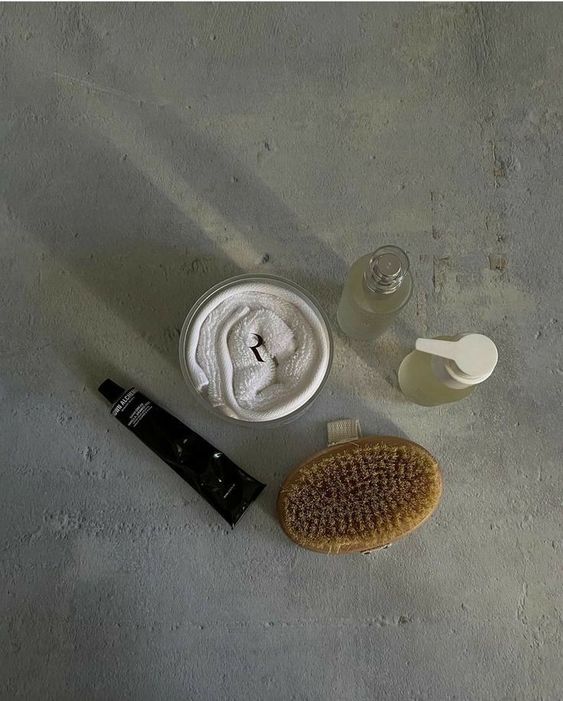
Did you ever get lost in the endless list of ingredients in your skincare products? Well, we are sure you are not the only one. In today’s blog, we have rounded up the top 10 botanical ingredients to look for when making your next purchase.
What are botanicals? Botanicals are parts derived from plants, herbs, flowers, fruits, leaves, roots, seeds, etc., that are added to drugs, cosmetic or personal care formulas due to their beautifying, therapeutic or organoleptic properties (color, flavor, smell, texture, etc.)[1] [2].
Among others, the below are 10 botanical ingredients that would definitely give your skin that extra umph you are looking for:
-
Bakuchiol
An organic compound that is found primarily in the seeds of the Indian Babchi plant (Psoralea corylifolia)[3]. This extract has received a lot (and when we say a lot, we mean A LOT!) of attention during the past 5 years due to the clinical studies that confer bakuchiol retinol-like benefits[3]. This means that bakuchiol´s actions are comparable to those of retinoids in their capacity to reduce the signs of acne and photoaging with the added benefit of being well-tolerated, even by sensitive skin types[3]. What actions are we talking about? The answer is really exciting: reduced wrinkle depth, increased elasticity, neutralization of oxidative stress, inhibition of pathogenic microorganisms and improved softness, among many others[3][4]. Bakuchiol is, therefore, a powerful antioxidant and anti-inflammatory agent that can effectively combat and/or prevent acne, premature aging, melasma, among many other skin conditions[3][4]. -
Burdock
The arctium lappa root, which has been widely praised and consumed in both Chinese and European communities for its nutritional content, boasts blood detoxifying compounds that boost circulation to the skin's surface[5]. The result is a smooth and radiant complexion[5]. This root also possesses strong anti-bacterial and anti-inflammatory peptides that heal ailments such as acne and eczema[6]. -
Chagamushroom (Inonotus obliquus)
Contains potent polyphenols and antioxidants (flavonoids, hispidin, superoxide dismutase, etc.), that protect against UV light -induced oxidation that can be observed on the skin as thickening and wrinkles[7]. Chaga´s antioxidants can also stimulate collagen synthesis and inhibit melanin production, thus revealing a more youthful and even-out complexion[8][9]. This cold climate mushroom has been shown to effectively fight off inflammation and stop the proliferation of obnoxious microorganisms, such as acne-causing bacteria[10]. -
Chamomile
A well-known traditional medicinal herb from Europe and Western Asia that has been used for generations on end[10]. It comes in two varieties: German chamomile (Chamomilla recutita) and Roman chamomile (Chamomilla romana; Chamaemelum nobile)[11]. Approximately 120 substances involved in metabolism, including terpenoids and flavonoids, are found in the dry flowers of chamomile, which contribute to its therapeutic properties[11]. The German variety is rich in flavonoids, apigenin, luteolin, patuletin, and quercetin, bisabolol , and its oxide azulenes, including chamazulene and acetylene derivatives[12]. Roman chamomile, on the other hand, has less chamazulene and is mostly made up of angelic and tiglic acid esters[12]. Chamomile is commonly used to treat inflammation, eczema, rashes, sunburn , ulcers, etc., as well as bacterial infections of the skin[12]. When applied topically, chamomile proved to be around 60% as effective as hydrocortisone cream[12]. According to recent research, chamomile promotes a speedier full wound healing when compared to corticosteroids[12]. -
Dandelion
Taraxacum officinale extracts, particularly leaf and flower extracts, protect the skin from photoaging by counteracting the damaging effect of the free radicals and pro-inflammatory agents produced by UVB radiation. Dandelion contains 26 chemicals that encourage the proliferation of fibroblasts, which are the cells that synthesize collagen, elastin, and hyaluronic acid[14]. This means that dandelion can and does support skin renewal and hydration[15]. These same chemicals, including potent antioxidants, mop up reactive oxygen species and are considered an excellent source of natural antimicrobials[16][17]. -
White tea
Obtained from the fresh leaves and buds of the Camellia sinensis plant[18]. Since it undergoes minimal processing, through drying, it is able to preserve almost all its polyphenol content intact, particularly Epigallocatechin gallate (EGCG)[18][19]. Green tea components were proven to reduce the direct effects of sunburn, according to research[20]. These effects include the destruction of the immune cells of the skin, photoaging, and skin cancer[20]. Topical treatment of white tea extract significantly alleviates erythema, transepidermal water loss as well as reduces wrinkle production[21]. The latter can be attributed to the inhibition of the MMP-3 enzyme that breaks down collagen and elastin, the beauty proteins[21]. For all the previously mentioned reasons, white tea constitutes one of the best results-oriented active ingredients against premature aging and sun-inflicted damage. -
Hibiscus
An African antioxidant flower with an amazing potential for suppressing the action of enzymes that degrade collagen, elastin, hyaluronic acid as well as stimulating melanin production when the skin is exposed to UVB light[22]. This is mainly due to its rich content of free radical scavenging compounds like ascorbic acid, β carotene, myricetin, anthocyanins, and sugars[23][24]. Topical application of hibiscus has been shown to speed up wound healing in clinical trials[24][25]. Plus, it is a natural source of malic and tartaric acids, which are gentler AHAs that exfoliate the skin, support healthy skin renewal, and reveal a brighter complexion[25]. -
Schisandra
Schisandra chinensis is one of the staple remedies in both Traditional and Modern Chinese Medicine[26]. The berries of this plant are chock-full of lignans, a type of polyphenols with strong antioxidant, anti-inflammatory, and detoxifying properties that are capable of hindering the activity and formation of oxidative agents[26]. These compounds also have proven antibacterial, antiviral, and anticancer effects[26]. Schisandra extract has become one of the most sought-after cosmetic ingredients due to the deeply moisturizing, soothing, toning, barrier-protective, and wound-healing functions that have been attributed to them[26]. Moreover, research has demonstrated that schisandra lignans increase the production of glutathione[26]. Just so you know, glutathione is considered the body's powerhouse antioxidant and a wonderful rejuvenating natural chemical[26]. -
Willow bark
If this name doesn't ring a bell, perhaps salicylic acid will. Turns out that this popular acid is derived from a substance called salicin, which is present in the bark of the Salix alba tree[27]. Topical application of willow bark, rich in salicin, considerably improves the appearance of pores and wrinkles by producing a resurfacing effect[27]. Additionally, it softens roughness, reduces pigmentation, improves firmness and definition of the jawline[27]. And, oh yes!, willow bark has a long-standing use as a highly effective antibacterial, antioxidant, anti-inflammatory and analgesic treatment[28]. No wonder why many cosmetic brands have included it as their star ingredient in their anti-acne formulas. -
Horsetail
The Equisetum arvense plant is well-known in folk medicine as a magnificent remedy for bladder, kidney, menstrual, digestive, pulmonary, and rheumatic conditions[29]. Its wide array of nutrients, including minerals, polyphenol compounds, phytosterols, and saponins, make it the perfect candidate for beauty-oriented products[29]. These nutrients boast anti-inflammatory, antimicrobial, astringent, conditioning, wound-healing, and moisturizing actions that benefit acne-prone, eczema, and aging skin[29]. Its antioxidant potential is so great that it even prevents hair from greying[29]. Read this carefully: Horsetail contains more silicon than any other plant. What do we need silicon for? The body uses it to make collagen and to glue other protein molecules together[29]. Continuous application of horsetail will reveal a softer and more luminous complexion[29]. Practically all skin conditions will react favorably to horsetail usage; hence, it can be considered “cutaneous panacea”.
Can you keep a secret? We are very close to our prelaunch, and we are super excited to reveal our secret
star ingredient used in our products. Stay tuned on our Instagram, Linkedin, Pinterest, and Facebook. profiles to learn all about it!
References:
[1] https://cosmeticsinfo.org/botanicals
[2] https://ods.od.nih.gov/factsheets/BotanicalBackground-Consumer/
[3] https://onlinelibrary.wiley.com/doi/full/10.1111/bjd.16918
[4] https://www.researchgate.net/publication/284931325_Bakuchiol_in_the_management_of_acne-affected_Skin
[5] https://pubmed.ncbi.nlm.nih.gov/20981575/
[6] https://www.ncbi.nlm.nih.gov/pmc/articles/PMC7248785/
[7] https://www.ncbi.nlm.nih.gov/pmc/articles/PMC3887607/
[8] https://pubmed.ncbi.nlm.nih.gov/19184774/
[9] https://pubmed.ncbi.nlm.nih.gov/25197307/
[10] https://www.ncbi.nlm.nih.gov/pmc/articles/PMC3774877/
[11] https://www.sciencedirect.com/science/article/pii/B978012418680400018X
[12] https://www.ncbi.nlm.nih.gov/pmc/articles/PMC2995283/
[13] https://www.ncbi.nlm.nih.gov/pmc/articles/PMC4630464/
[14] https://pubmed.ncbi.nlm.nih.gov/22293479/
[15] https://www.ncbi.nlm.nih.gov/pmc/articles/PMC3834392/
[16] https://pubmed.ncbi.nlm.nih.gov/25644491/
[17] https://www.ncbi.nlm.nih.gov/pmc/articles/PMC5553762/
[18] https://www.sciencedirect.com/science/article/pii/B9780128124918000588
[19] https://www.sciencedirect.com/science/article/pii/B9780123849373000033
[20] https://www.sciencedaily.com/releases/2003/01/030130081227.htm
[21] https://www.ncbi.nlm.nih.gov/pmc/articles/PMC4289929/
[22] https://pubmed.ncbi.nlm.nih.gov/31583701/
[25] https://www.sciencedirect.com/science/article/pii/S030881461400692X
[26] https://www.ncbi.nlm.nih.gov/pmc/articles/PMC5378736/
[27] https://pubmed.ncbi.nlm.nih.gov/20883292/
[28] https://pubmed.ncbi.nlm.nih.gov/28712268/
[29] https://innovareacademics.in/journal/ajpcr/Vol3Issue3/3.pdf




